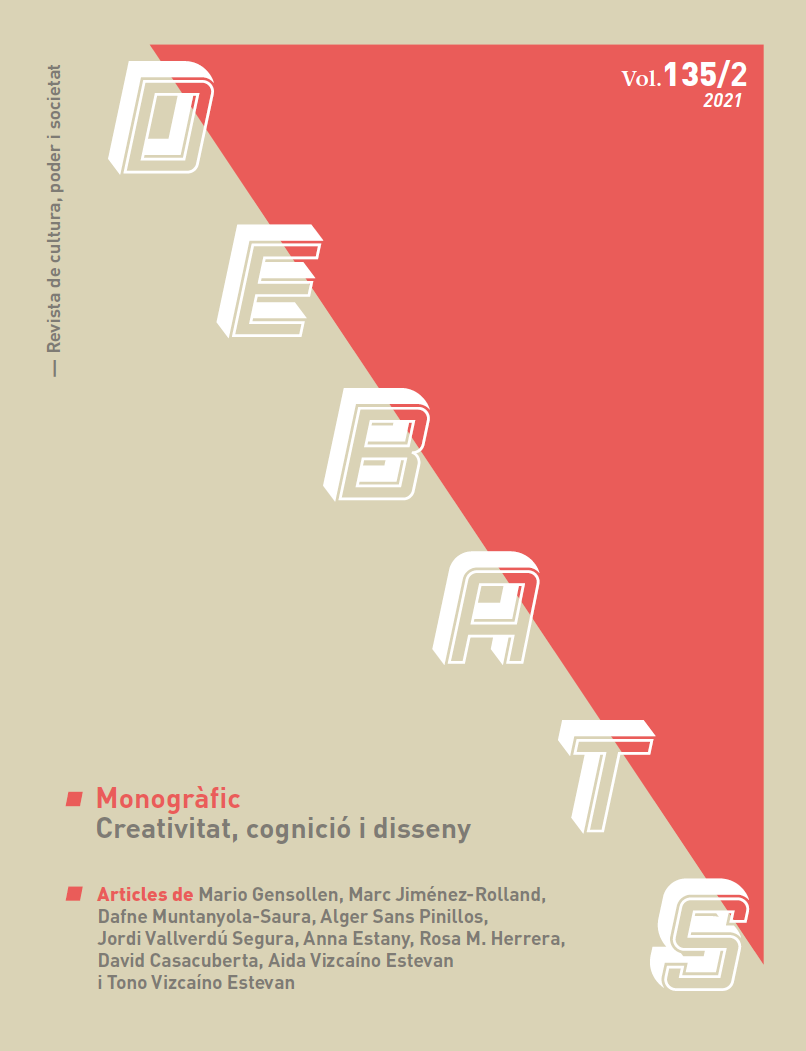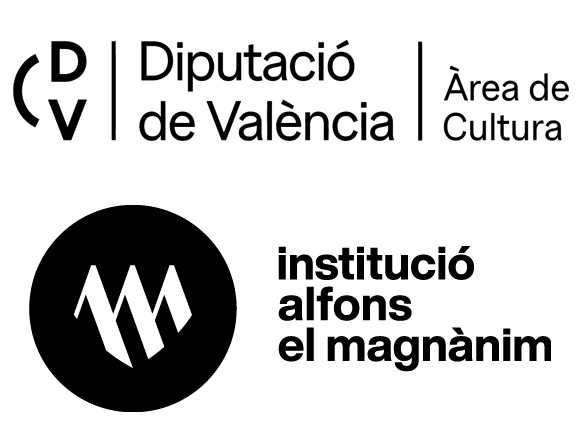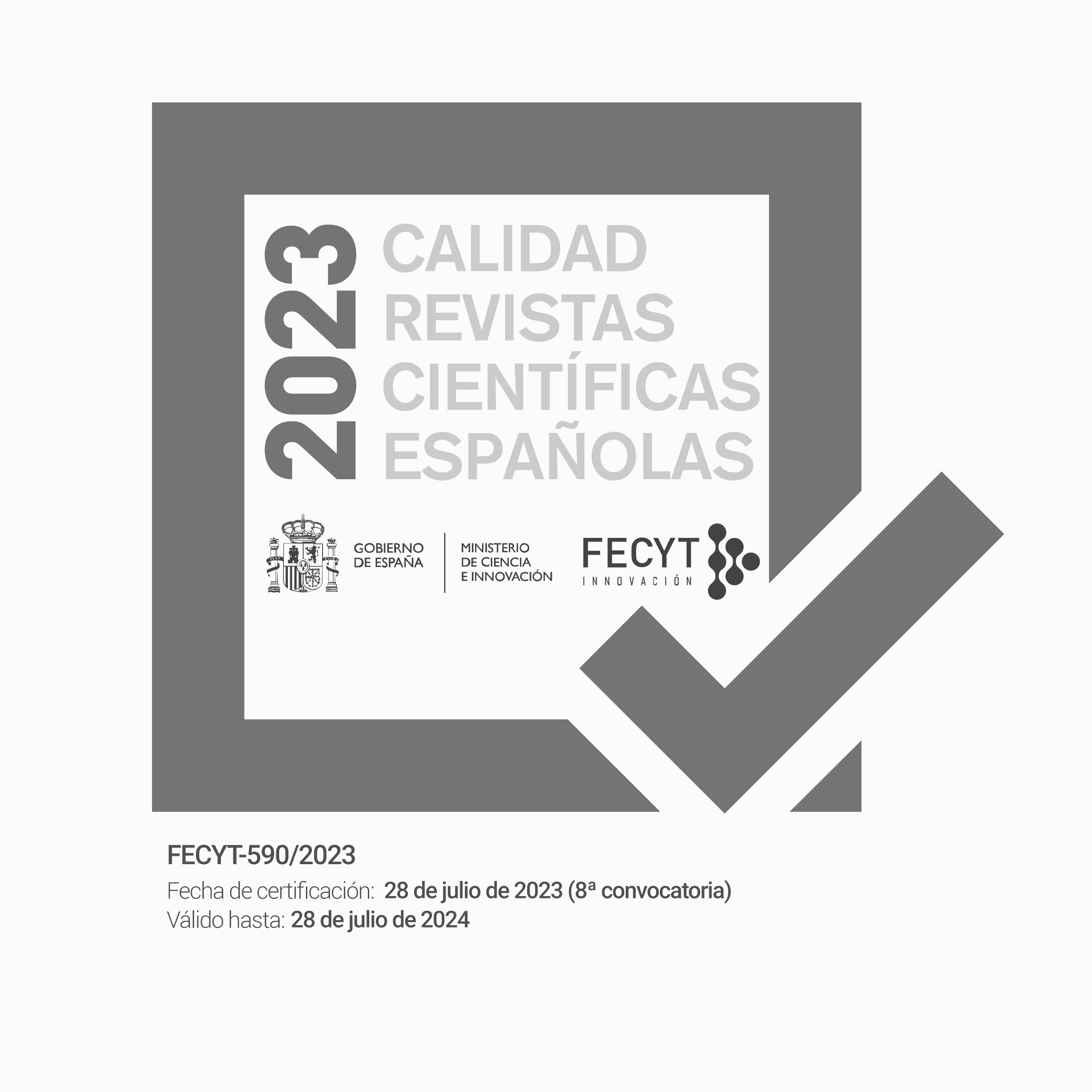Mètodes naturalistes de la sociologia de la creativitat: Contra el reduccionisme
DOI:
https://doi.org/10.28939/iam.debats-135-2.2Palabras clave:
sociología de la cultura, legitimidad, gusto, etnometodología, Lizardo, Bourdieu.Resumen
En el contexto cambiante de los consensos básicos que constituyen la cultura legítima y las definiciones de creatividad, la sociología de la cultura juega un papel importante. Numerosos estudios en ciencias sociales y cognitivas lo demuestran empíricamente (Bourdieu, 1979; Becker, 1982; 2002; Sennett, 2012; Muntanyola-Saura, 2012; 2014; 2016). La creatividad como forma de cognición
social forma parte de un contexto institucional. Sin embargo, la influyente rama culturalista de la sociología cognitiva (CCS) reduce la creatividad a un nivel psicológico cognitivista (Lizardo y Strand, 2010). Partimos aquí de la conjetura de que es posible para la sociología de la cultura aprovechar el paradigma naturalista de la cognición para explicar la creatividad sin caer en posturas reduccionistas ni atomistas. Por lo tanto, el cuerpo de este artículo es una revisión bibliográfica que sin tener la ambición de ser
exhaustiva sí que ofrece una mirada completa sobre unos modelos pragmáticos e integrados de creatividad. Se tiene en cuenta la diversidad de propuestas que existe para identificar los postulados de partida de los autores que centralizan el debate tanto a nivel macro como a nivel micro. Los estudios analizados presentan procesos intersubjetivos de creación y transmisión de criterios
más o menos legítimos de consumo cultural, como por ejemplo categorizaciones, evaluaciones y juicios estéticos. La conclusión es que la perspectiva sociológica puede reforzar críticamente la creatividad.
Descargas
Citas
Alac, M. (2017). We like to talk about smell: A worldly take on language, sensory experience, and the Internet, Semiotica, 215: 143–192
Armstrong V (2011) Technology and the Gendering of Music Education. Farnham: Ashgate.
Ariño, A. i Llopis, R. (2017). Culturas en tránsito. Madrid: Fundación SGAE.
Autora (2014).
Becker, H. (1982). Art worlds. Berkeley: Berkeley University Press.
Becker, H. (2002). Studying the New Media. Qualitative Sociology , 25-3, 337-343.
Berger, P. i Luckmann, T. (1988). La construcció social de la realitat. Barcelona: Herder.
Bourdieu, P. (1979). La distinction. Paris: Seuil.
Bourdieu, B. (1984) Raisons Practiques. Paris: Seuil.
Bourdieu, B. (1994). Les regles de l'art. Paris: Seuil.
Brekhus, W. H. (2015). Culture and Cognition. Patterns in the Social Construction of Reality. Cambridge UK: Polity Press.
Bunge, M. (2018). Diccionari filosòfic. Barcelona: Institut d'Estudis Catalans (IEC).
Bryson, B. (1996). "Anything But Heavy Metal": Symbolic Exclusion and Musical Dislikes, American Sociological Review, 61 (5) 884-899.
Clark, Andy. (2008). Supersizing the mind. Oxford, UK: Oxford University Press.
Cicourel, A. (2002). The Interaction of Discourse, Cognition and Culture. Discourse Studies, 8 (1), 25-29.
Cifariello, F. (2017). "Creativitá musicale di consumo" en Fele, G.,Russo, M.,Cifariello, F. (Eds.) Creativitá musicali. Narrazioni, practiche e mercato. Milano: Mimesis.
Damasio, A. (1999). The Feeling of What Happens: Body and Emotion in the Making of Consciousness: New York: Harcourt Brace.
DelVal, F. (2017) Rockeros insurgentes, modernos complacientes: un análisis sociológico del rock en la Transición (1975-1985). Madrid: Fundación SGAE.
DeNora, T. (2014). Making Sense of Reality: Culture and Perception in Everyday Life. London: Sage.
Dennett, D. (1995). Darwin’s dangerous idea. New York: Simon & Schuster.
DiMaggio, P. (1987). Classification in Art, American Sociological Review, 52,4,: 440-455.
Dreyfus, H. (1996). The current relevance of Merleau-Ponty’s phenomenology of embodiment. The Electronic Journal of Analytic Philosophy, 4.
Du Gay P (1997) Doing Cultural Studies: The Story of the Sony Walkman. London: Sage/Open University Press.
Eagleton, T. (2000). The idea of culture. London: Blackwell Publishing.
Fele, G. (2016). Il paradosso del gusto. Societàmutamentopolitica, 7 (14): 151-174.
Frith, S. (1986). Art versus technology: The strange case of popular music. Media, Culture & Society, 8: 263–279.
Fourcade, M. (2012). The Vile and the Noble: On the Relation between Natural and Social Classifications in the French Wine World. Sociological Quarterly, 53 (4), 524-545.
Gamboni, D. (2007). La destrucción del arte. Iconoclasia y vandalismo desde la Revolución Francesa. Madrid: Cátedra.
Gallese, V., C. Keysers, i G. Rizzolatti (2004). A unifying view of the basis of social cognition, in Trends in Cognitive Science, 8: 396–403.
Gibbs, R. (2006). Embodiment and cognitive science. New York, NY: Cambridge
University Press.
Green, B. (2016). I Always Remember That Moment’: Peak Music Experiences as Epiphanies. Sociology, 50(2) 333–348.
Heinich, N. (1999) La sociologie et les publics de l'art en Moulin, R. (op.cit)
Hennion, A. (2005). Pragmatics of Taste. In Jacobs M. & Hanranhan, N. The Blackwell Companion to the Sociology of Culture, Oxford, Blackwell, pp.131-144.
Herrera-Usagre, M. (2011). El consumo cultural en España. Una aproximación al análisis de la estratificación social de los consumos culturales y sus dificultades metodológicas. Empíria, Revista de Metodología de Ciencias Sociales, 22: 141-172.
Johnson, C; Dowd, T. & Ridgeway, C. (2006), Legitimacy as a Social Process, Annual Review of Sociology, 32: 53-78.
Jacobi, D. i Luckerhoff, J. (2012). Looking for non-publics. Presses de l'Université du Québec.
Kirsh, D. (2009). Projection, Problem Space and Anchoring. In N. A. Taatgen & H. van Rijn (Eds.), Proceedings of the 31st Annual Conference of the Cognitive Science Society (pp. 2310-2315). Austin, TX: Cognitive Science Society.
Lamont, M. (2010). Looking back at Bourdieu. In E. B. Silva, & A. Warde (Eds.), Cultural analysis and Bourdieu’s legacy: settling accounts and developing alternatives (pp. 128–141).London: Routledge.
Latour, B. (1986).Visualisation and Cognition: Thinking with Eyes and Hands. In H. Kuklick (ed.) Knowledge and Society Studies in the Sociology of Culture Past and Present , Jai Press 6: 1-40.
Lena, JC, & Peterson, RA (2008). Clasificación as Culture: Types and Trajectories of Music Génders. American Sociological Review, 73 (5), 697-718.
Lieberman,K. (2013). MORE Studies in Ethnomethodology: studies of the in vivo organization of sense. State University of New York Press.
Lipovetsky, G. (2007). Le bonheur paradoxal. Essai sur la société d'hyperconsommatiom. Paris: Gallimard.
Lizardo, O. (2004). “Mirror Neurons,” Collective Objects and the Problem of Transmission: Reconsidering Stephen Turner’s Critique of Practice Theory, Journal for the Theory of Social Behaviour, 37:3, 219-350.
Lizardo, O. & Strand, M. (2010). Skills, toolkits, contexts and institutions: Clarifying the relationship between different approaches to cognition in cultural sociology. Poetics, 38: 204–227.
López Sintas, J.L.; Filimon, N., Cebollada, A. Filimon , N & Gharhaman, A. (2014) Music access patterns: A social interpretation. Poetics 46: 56–74.
Mas, X. (2017) La música clàssica contemporània: una perspectiva etnomusicològica. Tesi doctoral de sociologia, Universitat de València.
Moschetta, P.H. y Vieira, J.S. (2018) "Music consumption in the streaming era: Music curation practices in Spotify", Congreso KISMIF 2018: Gender Differences, Identities and DIY Cultures Universidad de Porto, 2-3 Julio.
Moulin, R. (Ed.) (1999) Sociologie de l'art. Paris: L'Harmattan.
Premack, D. (2004). Is Language the Key to Human Intelligence? Science 303, 318-320.
Ramachandran,Vilanayur S. i Blackeslee, Sandra (1999). Phantoms in the Brain: Probing the Mysteries of the Human Mind. NewYork: William Morrow.
Regev, M. (2013). Pop-rock Music. Aesthetic Cosmopolitanism in Late Modernity. Cambridge UP.
Rendueles, C. (2013).Sociofobia. El cambio político en la era de la utopía digital. Madrid: Capitán Swing.
Rosenblum, B. (1999) Artists, Alienation and the Market in Moulin (op cit).
Searle, J. (2004). Mind. Oxford University Press.
Sennet, R. (2012). Together. London: Penguin Books.
Schütz, A. (1972). Collected Papers vol. I. The Netherlands: Springer.
Stuart Hall, E. (2007). Richard Hoggart, The Uses of Literacy and the cultural turn. International Journal of Cultural Studies, 10(1): 39–49.
Stuart Hall, E. & Jefferson, T. (eds) (1998 [1975]). Resistance Through Rituals: Youth Subculturas in Post-war Britain. London New York: Routledge.
Teil, G. (2004). De la coupe aux lèvres. Pratiques de la perception et mise en marche des vins de qualité. Toulouse: Éditions Octarès.
Vandenberg et al (2018) "Taste patterns of the 'illegitimate' cultural consumer", Congreso KISMIF 2018: Gender Differences, Identities and DIY Cultures Universidad de Porto, 2-3 Julio.
Vlegelsa, J. & Lievens, (2017). Music classification, genres, and taste patterns: A ground-up network analysis on the clustering of artist preferences Poetics 60: 76–89.
Williams, R. (1992 [1958]). Culture and Society. Londres: The Hogarth Press
Descargas
Publicado
Cómo citar
Número
Sección
Licencia
Sin perjuicio de lo dispuesto en el artículo 52 de la Ley 22/1987 de 11 de noviembre de Propiedad Intelectual, BOE del 17 de noviembre de 1987, y conforme al mismo, los autores o autoras ceden a título gratuito sus derechos de edición, publicación, distribución y venta sobre el artículo, para que sea publicado en Debats. Revista de cultura, poder y sociedad.
Debats. Revista de cultura, poder y sociedad se publica bajo el sistema de licencias Creative Commons según la modalidad «Reconocimiento - NoComercial (by-nc): Se permite la generación de obras derivadas siempre que no se haga un uso comercial. Tampoco se puede utilizar la obra original con finalidades comerciales».
Así, cuando el autor o autora envía su colaboración, acepta explícitamente esta cesión de derechos de edición y de publicación. Igualmente autoriza a Debats. Revista de cultura, poder y sociedad, la inclusión de su trabajo en un fascículo de la revista para que se pueda distribuir y vender.











